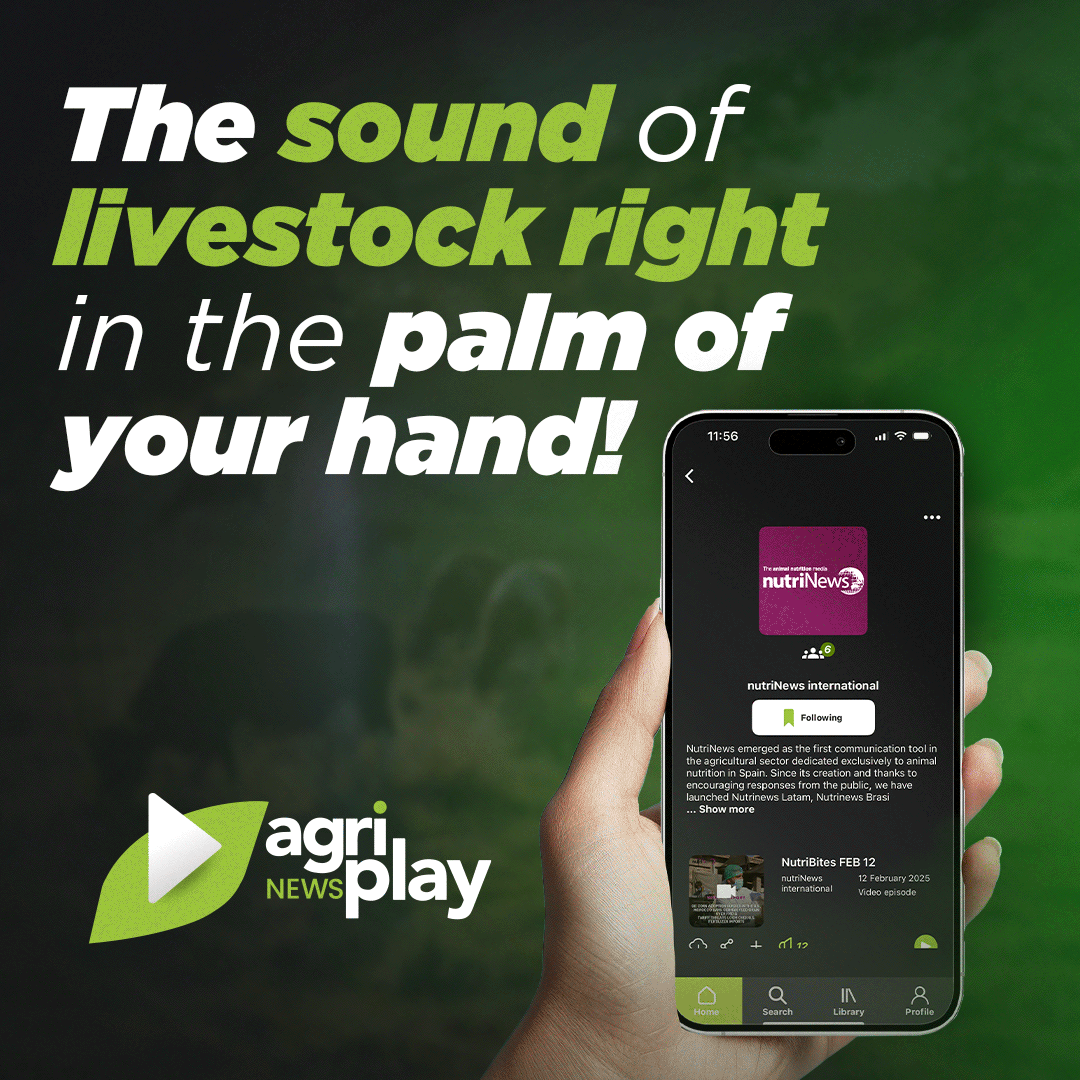The future of animal nutrition will be shaped by five cutting-edge scientific disciplines, namely blockchain technology, big data analysis, artificial intelligence, genomics, and CRISPR-Cas9 technology. This article reviews the most relevants characteristcs of each of these fields, analysing their possible utilisation in animal nutrition.
Introduction
We live in an era of exponential development of science and technology, which has no precedent in human history. The simultaneous development of knowledge and communication technology have created a unique innovative ecosystem, in which the generation and dissemination of knowledge are occurring very quickly.
We find that the technological offer exceeds the capacity of practical implementation by the companies. This generates high expectations on the application of these new technologies, and how they will shape the future in all areas, including animal nutrition.
The list of these disruptive innovations is fortunately quite long. We will review five of them, which we are already applying in some of our innovation projects. We believe they will certainly shape the Animal Nutrition of the future.
Blockchain technology
This technology allows digital records, such as databases, documents, and computer files, to be publicly accessible and in a safe, inviolable way. Blockchain users themselves guarantee the integrity of those records through the formation of a chain of blocks, distribution networks, and a complex encryption and verification technology.
The first practical application of this idea was the use of cryptocoins. Bitcoin, developed by Satoshi Nakamoto (2008), was the pioneer. He published a highly technical, disruptive paper in specialised fora, in which a methodology based on the cryptography and file sharing to create cryptocoins was described. In 2009, he shared the software, and the first bitcoins were created. The follwing year, he transferred the project to his followers and disappeared. His real identity still remains unknown. Currently, there are hundreds of cryptocoins: Bitcoin, Ethereum, XRP, BitcoinCash, Litecoin, Tether, etc.
The application of blockchain technology in animal nutrition and production is also very promising
In a not-too-distant future, an enormous amount of information on raw materials will be available through the blockchain technology, such as:
- origin
- production method
- genome, nutrients
- safety
- sustainability
- etc.
The feeds and nutritional products may use this technology to ensure:
- traceability
- communication of technical data
- safety
- product sustainability
Blockchain emerges as the technology enabling safe, reliable management of the large amount of data agenerated in the production chain in which animal nutrition participates.
Big Data and the future of animal nutrition
The technological revolution of information is, certainly, one of the most important advancements that we have had in recent years. Currently, billions of mobile devices are sending an enormous amount of data to the network. Such info is stored in large servers and managed with powerful relational database systems. Also, the machines are generating their own data in the so-called internet of things (IOT).
Extremely precise sensors monitor crops, farms, and animals. From space, thousands of satellites equipped with remoted sensing systems scan the planet at ever shorter intervals.
The amount of data is overwhelming, and its potential is enormous.
We are beginning to explore how to store, process, and extract information, as well as generate knowledge from this colossal amount of data. The industry sector is taking great steps forward in this area with the implementation of industry 4.0; the feed, additives, meat, and food companies, besides the slaughterhouses, are not exceptions.
In animal production, progress has also been made in this area. While the environmental monitoring and control is a reality in intensive production systems, the large-scale integration of these data in the cloud is being developed. The productive, biometric, and physiological monitoring has started to take place. Integrating those productive data from animals, farms, slaughterhouses, and meat industry will provide a new overall approach of the production chain.
The analysis of this information will enable us to adjust more adjust more precisely the diets to the needs of animals. Also, the higher frequency of measurements may lead to real-time monitoring of nutritional changes in the future. However, it is not an easy task, since the analysis of such a large amount of data is extremely complex. The help of a different class of intelligence – Artificial Intelligence – seems to be necessary.
Artificial Intelligence
The analysis of large amounts of data is not new. In research, we work with enormous databases, which are processed, structured, and analysed through complex statistical processes. However, the amount of data we face today is unprecedented, dynamic, and is constantly growing. A new technology is necessary to work with this kind of information.
The Artificial Intelligence (Deep Learning or Machine Learning) is an automated learning model based on artificial neural networks. It works like the human brain, with optimization algorithms. The combination of millions of these units, which are programmed according to the available data, can identify complex patterns and link them with the results, while extracting information and knowledge from dispersed data. This technology has been successfully used for image analysis, engineering design, genome studies, biomedicine, etc.
In animal nutrition, demonstration studies for the calculation of requirements have been published (Analytics in Sustainable Precision Animal Nutrition. Douglas M. Liebe and Robin R. White. Animal Frontiers. April 2019, Vol. 9). Its potential application is very wide, and it can be used for:
- estimating the nutritional requirements of the animals
- establishing feeding plans based not only on productive objectives, but also addressing the sanitary, product quality, health, and sustainability aspects.
The integration of all of this information will be an essential element for the development of a holistic animal nutrition. It will be based on production data, environmental factors, health, immunity, sustainability, genetics, genomics, quality of final products, and safety of the entire production chain, as an integrated whole.
The genomic revolution
 IN 2016, the complete sequencing of the human genome was a historic milestone, and the beginning of a new journey for genomics.
IN 2016, the complete sequencing of the human genome was a historic milestone, and the beginning of a new journey for genomics.
The Human Genome Project was an international collaborative effort that lasted 15 years and involved a USD 3 billion budget. Since then, the advances in sequencing techniques have been vertiginous.
The Next Generation Sequencing technology, or high-throughput sequencing, combined with bioinformatics, has drastically reduced the time and cost of gene sequencing, Today, it is a routine practice of relatively easy access. USB stick genome sequencers (designed to connect to the computer, pocket-sized, and at the same price as a high-end smartphone) are already in the market.
A flood of massive sequencing has generated an enormous amount of genomic data, which must be studied and understood. Its practical application in Animal Nutrition, as part of the Big Data mentioned above, should be researched.
In the very near future, this knowledge will enable the application of Nutrigenomics to adjust feed formulation, calculating the requirements according to the genome of the animals.
Development of Nutrigenomics
The development of Nutrigenomics will allow us to know the interaction nutrients-genome, implementing it in feed formulation. This will result in a high-precision functional nutrition which, combined with epigenomics, can activate or deactivate key genes for health and productivity of livestock animals.
Additionally, metagenomics will allow us to know and control the ecogenome of the intestinal microbiota. This will allow the animals to reach their full potential, improving health and productivity, and modulating it through feeding.
 The importance of the microbiota
The importance of the microbiota
For many years, microbiota has been assumed to be important to animal nutrition. However, the full development of the descriptive and functional metagenomics will give us the keys to a more precise control of the intestinal microbiota, and a maximisation of its potential.
We are now beginning to understand the close interactions between microbiome and host, as well as its symbiotic nature. It may be that, in the near future, we could formulate with careful consideration not only to genetics, but also to genomics, epigenomics and metagenomics. As we will see next, may be very different from the currently observed.
CRISPR-Cas9: A revolution in gene editing and the animal nutrition of the future
 The discovery of this revolutionary gene editing technique takes us to the marshes of Santa Pola, in Alicante, Spain. There, the microbiologist Francisco J. M. Mojica studied, as part of his doctoral thesis (1993), some primitive microorganisms or archaea able survive in saline environments. Clustered regularly interspaced short palindromic repeats (CRISPR) were observed on the genome of these archaea. They do not encode proteins and have unknown (but essential) functions that sustain life, since their alteration can lead to archaea’s death.
The discovery of this revolutionary gene editing technique takes us to the marshes of Santa Pola, in Alicante, Spain. There, the microbiologist Francisco J. M. Mojica studied, as part of his doctoral thesis (1993), some primitive microorganisms or archaea able survive in saline environments. Clustered regularly interspaced short palindromic repeats (CRISPR) were observed on the genome of these archaea. They do not encode proteins and have unknown (but essential) functions that sustain life, since their alteration can lead to archaea’s death.
After years of research, Mojica and his team published in 2003 the solution to the enigma: those sequences are defensive systems in the face of virus bacteriophages, which consist of the most primitive and simple mechanism capable of cleaving DNA yet discovered.
In 2012, Emmanuelle Charpentier, from Max Planck Institute, and Jennifer Doudna, from the University of California, published their findings on the application of this gene editing system. They opened a Pandora’s box of CRISPR-Cas9, the more effective, cheapest, and simplest gene editing tool ever created.
The uses of CRISPR-Cas9
The possibilities of CRISPR-Cas9 are enormous and its efficacy, precision, simplicity, and low cost mark the beginning of a new era in genetics.
Currently, we can highlight its application in the following research areas:
- the study of gene function
- susceptibility to diseases
- design of drugs
- genetic modification of organisms through transgenic techniques or regulation of species-specific genes
CRISPR-Cas9 in animal nutrition
In animal nutrition, this new technology will have a huge impact since it allows:
1) The development of new plants in which it is possible to overexpress or silence part of the genome. This will result on the production of new varieties with nutritional profiles that are totally different, improved, adapted for use, enriched with essential nutrients, free of antinutritional factors, etc.
2) Incorporating exogenous genes in plants, so that they can synthetize proteins, such as antibodies, enzymes, prebiotics, and functional components.
This is also applicable to livestock animals, where CRISPR-Cas9 can be used to develop an accelerated, totally directed gene selection. Besides genome improvements, this can be implemented to reduce the occurrence of diseases, as well as to increase resistance to disease, productivity, sustainability, etc.
The huge potential of this technique also raises many questions and ethical concerns that need to be resolved.
In the USA, there are products for human consumption that are genetically modified with CRISPR-Cas9, such as mushrooms resistant to browning, omega-3-enriched camelina oil, and a large list of other products that are already entering the marketplace. In the EU, it was determined that the CRISPR-Cas9 organisms will be subject, without any distinction, to the European laws governing transgenic organisms.
Conclusion
In the very near future, all technologies that we are developing and implementing in Research, Development and Innovation (RDI) projects will be of everyday use. They will allow to tackle much more effectively the enormous challenges faced today and in the future by global food production and animal nutrition. However, this is not only a matter of predicting the future, but also of making it happen.
This article was originally publlished in nutriNews Spain, under the title La nutrición animal del futuro












